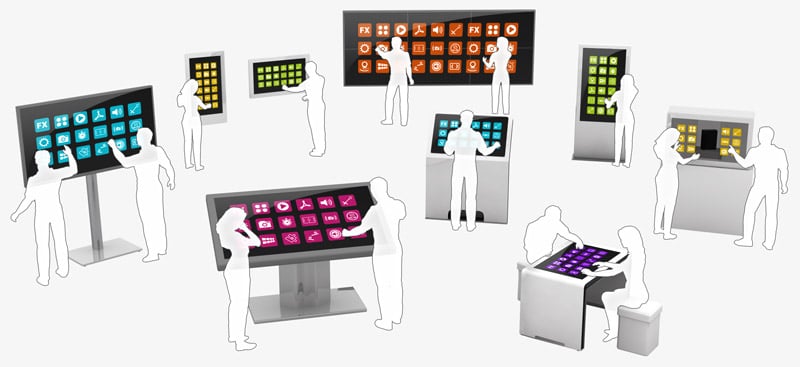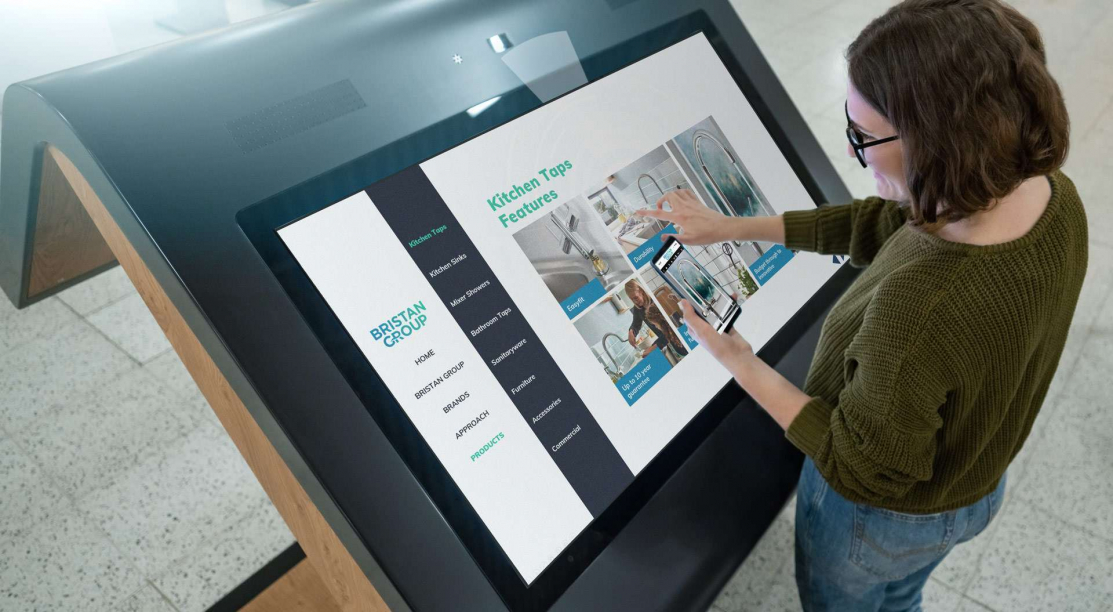Interactive touch screen software revolutionizes user engagement with its dynamic features and versatile applications, making it a crucial tool in various industries. Let’s dive into the world of interactive touch screen software and explore its endless possibilities.
Overview of Interactive Touch Screen Software
Interactive touch screen software refers to digital applications designed to be operated through touch gestures on a screen. This technology allows users to interact with content, navigate through menus, and perform various functions by simply touching the display.
Benefits of Interactive Touch Screen Software
- Enhanced User Engagement: Interactive touch screen software offers a more engaging and intuitive user experience compared to traditional interfaces.
- Improved Collaboration: In industries such as education and business, interactive touch screens facilitate collaboration by allowing multiple users to interact with the same content simultaneously.
- Increased Efficiency: Touch screen interfaces can streamline processes, reduce manual inputs, and increase productivity in various sectors.
- Customization Options: Users can personalize their interactions with the software, adjust settings, and access relevant information quickly.
Types of Interactive Touch Screen Software
- Interactive Display Software: Enables users to interact with digital content on large displays, commonly used in retail, museums, and public spaces.
- Interactive Presentation Software: Allows presenters to engage audiences by incorporating interactive elements such as polls, quizzes, and annotations.
- Interactive Wayfinding Software: Helps users navigate through complex spaces like airports, hospitals, and shopping centers using interactive maps and directions.
- Interactive Learning Software: Enhances educational experiences by providing interactive lessons, quizzes, and simulations for students of all ages.
Features and Capabilities: Interactive Touch Screen Software
Interactive touch screen software offers a wide range of features and capabilities that enhance user experience and engagement. Let’s explore some key features and discuss how these capabilities can benefit users.
Key Features of Interactive Touch Screen Software:
- Multi-touch support: Allows users to interact with the screen using multiple touch points simultaneously, enabling gestures like pinch-to-zoom and swipe.
- Customizable interfaces: Users can personalize the software interface to suit their specific needs and preferences.
- Interactive content: Offers engaging content such as videos, images, and interactive games to captivate users.
- Real-time updates: Provides the ability to update content in real-time, ensuring users have access to the latest information.
- Analytics and reporting: Enables tracking user interactions and collecting data for analysis to improve user engagement.
Enhancing User Experience with Interactive Touch Screen Software:
Interactive touch screen software enhances user experience by offering a dynamic and engaging interface that encourages active participation. Users can explore content in a hands-on manner, leading to increased retention and understanding of information. The interactive nature of the software also promotes collaboration and communication, making it ideal for educational, informational, and entertainment purposes.
Comparison of Interactive Touch Screen Software Solutions:
| Software | Key Features | Capabilities |
|---|---|---|
| Software A | Customizable interfaces, multi-touch support | Real-time updates, interactive content |
| Software B | Analytics and reporting, interactive content | Customizable interfaces, multi-touch support |
| Software C | Real-time updates, interactive content | Customizable interfaces, analytics and reporting |
Use Cases

Interactive touch screen software is utilized in a variety of industries and settings to enhance user engagement and interaction. Let’s explore some common examples and applications of interactive touch screen software in different sectors.
Education
In the education sector, interactive touch screen software is widely used in classrooms and educational institutions to create dynamic and engaging learning experiences. Teachers can use interactive displays to deliver multimedia content, conduct virtual field trips, and facilitate interactive lessons that cater to various learning styles. Students can actively participate in lessons, collaborate on projects, and receive immediate feedback, fostering a more interactive and immersive learning environment.
Retail, Interactive touch screen software
Retail establishments leverage interactive touch screen software to enhance the shopping experience for customers. Interactive displays can provide product information, showcase inventory, offer personalized recommendations, and enable self-service options like digital catalogs and virtual try-ons. By incorporating interactive touch screen technology, retailers can engage customers, increase brand awareness, and drive sales through a more interactive and personalized shopping experience.
Healthcare
In the healthcare industry, interactive touch screen software is utilized in various settings such as hospitals, clinics, and waiting areas to improve patient engagement and streamline processes. Interactive kiosks can provide patients with wayfinding assistance, appointment scheduling, educational resources, and entertainment options to reduce perceived wait times and enhance the overall patient experience. Healthcare providers can also use interactive touch screens for telemedicine consultations, patient education, and digital health records management, improving communication and efficiency in healthcare delivery.
Design and Customization

When it comes to interactive touch screen software, user interface design plays a crucial role in ensuring a seamless and engaging user experience. A well-designed interface can enhance user interaction, improve usability, and ultimately drive user engagement.
Importance of User Interface Design
User interface design is essential as it determines how users interact with the software. A visually appealing and intuitive design can make navigation easier, reduce user errors, and increase overall user satisfaction. It is important to consider factors such as color schemes, layout, typography, and visual elements to create a user-friendly interface.
Customization Options
Interactive touch screen software offers a range of customization options to tailor the software to specific needs. Some of the customization options include:
- Branding: Customize the software with company logos, colors, and other branding elements to create a cohesive look and feel.
- Content: Easily update and customize content to showcase specific products, services, or information relevant to the audience.
- Interactive Elements: Add interactive features such as touch gestures, animations, and multimedia content to enhance user engagement.
- Layout: Customize the layout to optimize the user flow and highlight key information effectively.
Tips for Designing Engaging Interfaces
Here are some tips for designing engaging and intuitive interfaces for interactive touch screen software:
- Keep it Simple: Avoid cluttered layouts and unnecessary elements. Focus on clarity and simplicity to guide users through the interface.
- Consistent Design: Maintain consistency in design elements such as colors, fonts, and styles to create a cohesive look and feel.
- User Feedback: Incorporate user feedback to improve the design and usability of the interface. Conduct usability testing to identify any potential issues and make necessary adjustments.
- Accessibility: Ensure the interface is accessible to all users, including those with disabilities. Include features such as larger fonts, audio descriptions, and alternative navigation options.
Concluding Remarks

From education to healthcare, interactive touch screen software has proven to be a game-changer in enhancing interaction and user experience. Embrace the future of technology with interactive touch screen software!
